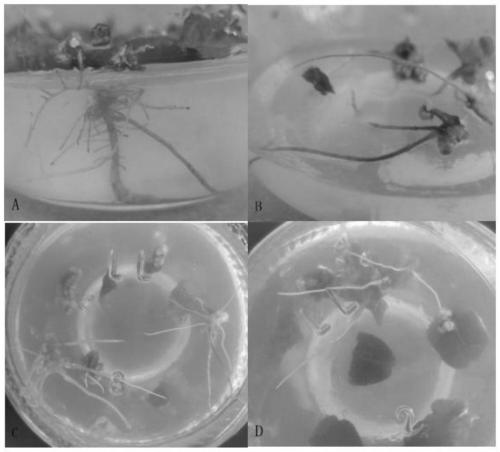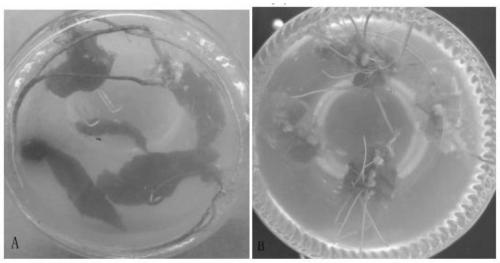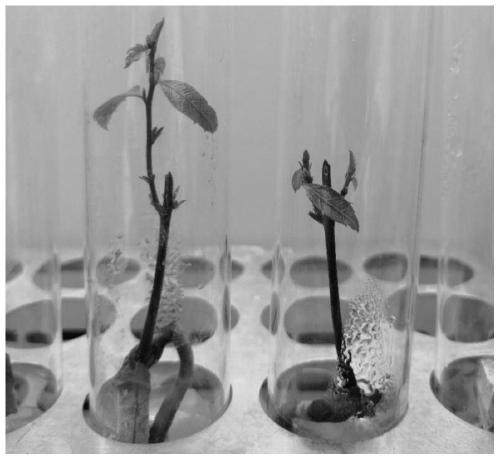Method for inducing castanea henryi tissue culture seedling leaves to generate adventitious roots
A technology of tissue culture seedlings and leaves, applied in the field of plant tissue culture, can solve the problems of low multiplication coefficient, easy browning, difficult rooting, etc.
- Summary
- Abstract
- Description
- Claims
- Application Information
AI Technical Summary
Problems solved by technology
Method used
Image
Examples
Embodiment 1
[0038] A method for inducing the direct generation of adventitious roots from leaves of tissue-cultured plantlets of Chestnut, comprising the following steps:
[0039]S1. Cultivation of Chinese chestnut tissue culture seedlings: Peel the seeds of Chinese chestnut, wash them with tap water for 20 minutes, disinfect them with 75% alcohol for 90 seconds on the ultra-clean workbench, rinse them with sterile water for 3 times; then wash them with 0.1% alcohol mercuric chloride solution for 9 minutes, rinse with sterile water 5 to 6 times. On the filter paper after high-temperature sterilization, part of the cotyledons of the seeds were excised with a sterile blade to obtain seed embryos with a size of 1 cm×0.6 cm×0.6 cm. Inoculate into the first MS medium after autoclaving. Placed in a light culture room for 25-35 days. The temperature of the light cultivation room is 27±1°C; the light cycle is 14 / 10h, and the light intensity is 50molm -2 the s -1 . The above mediums all conta...
Embodiment 2
[0051] A method for inducing the direct generation of adventitious roots from leaves of tissue-cultured plantlets of Chestnut, comprising the following steps:
[0052] S1. Cultivation of Chinese chestnut tissue culture seedlings: Peel the seeds of Chinese chestnut, wash them with tap water for 20 minutes, disinfect them with 75% alcohol for 90 seconds on the ultra-clean workbench, rinse them with sterile water for 3 times; then wash them with 0.1% alcohol mercuric chloride solution for 9 minutes, rinse with sterile water 5 to 6 times. On the filter paper after high-temperature sterilization, part of the cotyledons of the seeds were excised with a sterile blade to obtain seed embryos with a size of 1 cm×0.6 cm×0.6 cm. Inoculate into the first MS medium after autoclaving. Placed in a light culture room for 25-35 days. The temperature of the light cultivation room is 27±1°C; the light cycle is 14 / 10h, and the light intensity is 50molm -2 the s -1 . The above mediums all cont...
PUM
 Login to View More
Login to View More Abstract
Description
Claims
Application Information
 Login to View More
Login to View More - Generate Ideas
- Intellectual Property
- Life Sciences
- Materials
- Tech Scout
- Unparalleled Data Quality
- Higher Quality Content
- 60% Fewer Hallucinations
Browse by: Latest US Patents, China's latest patents, Technical Efficacy Thesaurus, Application Domain, Technology Topic, Popular Technical Reports.
© 2025 PatSnap. All rights reserved.Legal|Privacy policy|Modern Slavery Act Transparency Statement|Sitemap|About US| Contact US: help@patsnap.com



